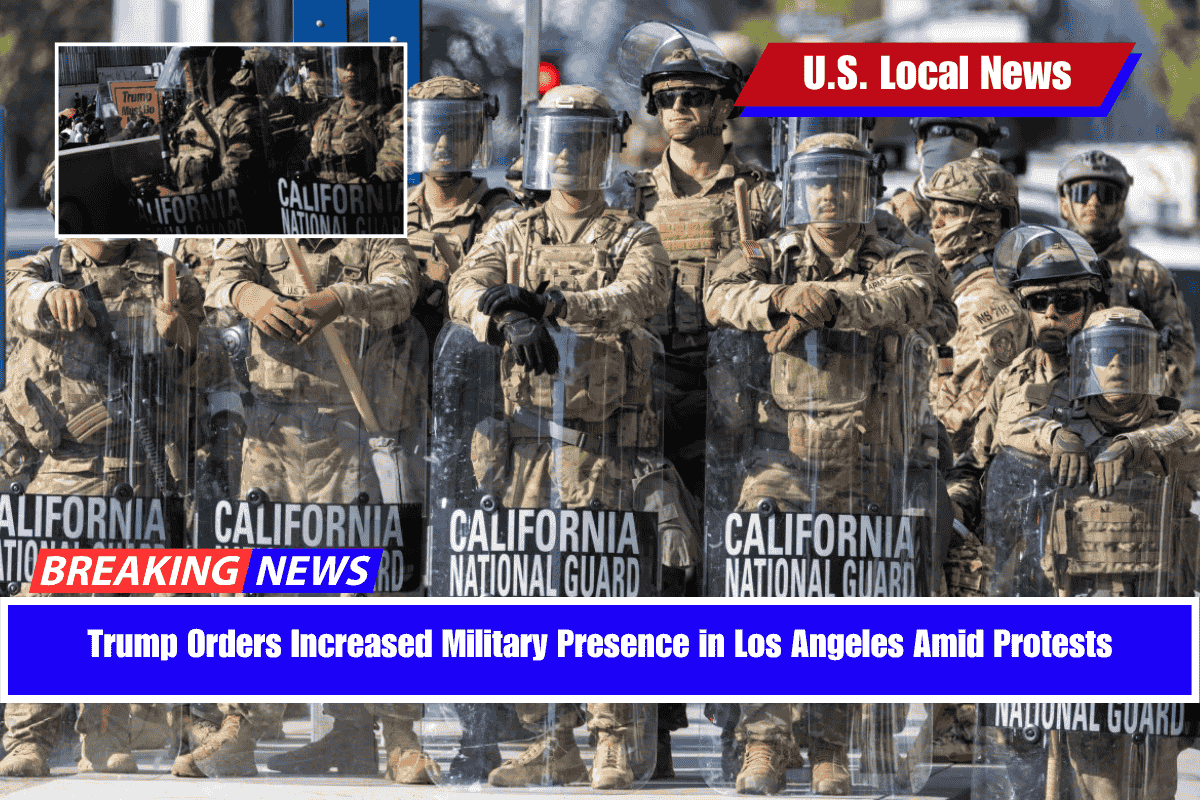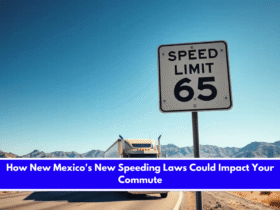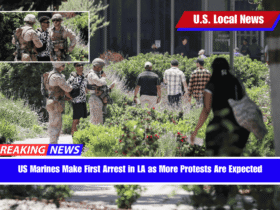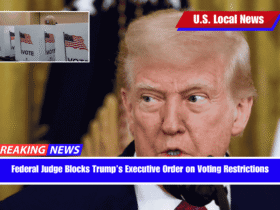In an unprecedented move, President Donald Trump has ordered an additional 2,000 National Guard troops along with 700 Marines to Los Angeles, escalating the military presence in the city during protests.
This decision comes after four days of violent demonstrations triggered by public outrage over the president’s tough stance on immigration enforcement, particularly family separations during deportations.
The Context of the Deployment
Trump’s decision to send more troops follows an earlier deployment of 2,000 National Guard members to the city, which was intended to assist with crowd control during the protests. These protests were sparked by federal immigration raids across Los Angeles, where more than 40 individuals were arrested.
As the situation intensified, Trump doubled the number of Guard troops stationed in the city, bringing the total number of military personnel to 4,700. His administration claims the deployment is necessary for public safety, but local officials and law enforcement have pushed back against this move.
Local Officials Push Back
California Governor Gavin Newsom, along with Los Angeles Mayor Karen Bass, has expressed strong opposition to the deployment, arguing that it is not needed and could increase tensions.
The Los Angeles Police Department (LAPD), led by Police Chief Jim McDonnell, also stated that they could manage the situation without the help of the Marines or National Guard. McDonnell specifically highlighted the logistical challenges that the military presence could create, especially as it interferes with local law enforcement operations.
Newsom criticized the president’s decision on social media, calling the deployment “reckless” and accusing Trump of using the National Guard to serve his own political interests rather than addressing genuine public safety concerns. He argued that the military presence was more about boosting the president’s image rather than solving the problems at hand.
The Situation on the Ground
The protests in Los Angeles have been concentrated in several downtown areas, particularly around a federal detention center where immigrants are being held after workplace raids.
On Monday, the demonstrations were largely peaceful, with thousands participating in a rally at City Hall, while smaller groups gathered outside the detention center. Despite the tense atmosphere, the protests were mostly nonviolent, and many protesters voiced their anger over the harsh treatment of immigrant families.
As the protests continued, law enforcement began using crowd control measures such as tear gas, rubber bullets, and flash-bang grenades.
The situation took a more confrontational turn as police made arrests for more aggressive acts, including throwing Molotov cocktails and ramming a motorcycle into officers. However, most of the crowd remained peaceful, with religious leaders stepping in at times to help de-escalate tensions.
State vs. Federal Authority
The deployment of federal troops without the request or consent of the state governor is seen as an unprecedented escalation. California Attorney General Rob Bonta filed a lawsuit challenging Trump’s use of the National Guard, arguing that the president’s actions trample on the state’s sovereignty and violate constitutional principles.
This legal action aims to halt the federal government’s authority to deploy troops in California without the governor’s approval.
Historically, such actions have been rare. The last time federal troops were sent to a state without the governor’s request was in 1965 when President Lyndon B. Johnson deployed National Guard troops to protect a civil rights march in Alabama.
The use of military force for domestic protests is highly contentious, with critics warning that it risks inflaming the already volatile situation.
The Role of the Marines and National Guard
The Marines have been deployed to safeguard federal property, including immigration offices and detention centers, as tensions rise between law enforcement and protestors.
A convoy of Marines, escorted by sheriff’s vehicles, traveled from their base in Twentynine Palms to Los Angeles, where they are stationed near key federal buildings. Despite their presence, there has been minimal interaction between the Marines and the protestors so far.
The National Guard troops have been stationed around the detention center, but local police have largely handled crowd control. While the troops are on alert, they have had limited involvement in active law enforcement activities.
Many of the protestors are frustrated with the federal government’s actions and argue that the deployment of military forces further criminalizes their efforts to protest.
Legal and Political Consequences
The deployment of federal troops in Los Angeles has raised serious concerns about the balance of power between state and federal authorities.
Legal experts suggest that the president’s actions could set a dangerous precedent, undermining state sovereignty and challenging the long-standing principle that the National Guard is under the control of state governors.
California’s legal challenge against the deployment highlights the growing divide between the state and the federal government, with the state’s leadership accusing Trump of using military force for political purposes rather than public safety.
As the legal battle continues, the situation in Los Angeles remains tense, with more protests likely as activists continue to voice their opposition to the administration’s immigration policies.











Leave a Reply